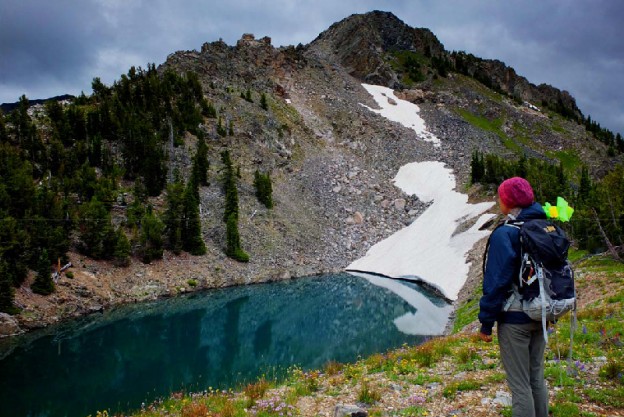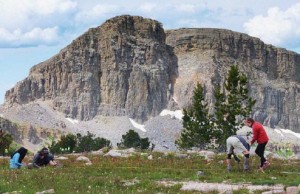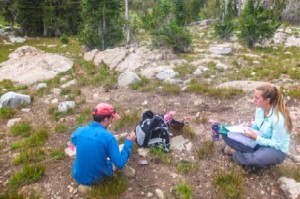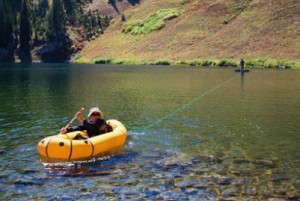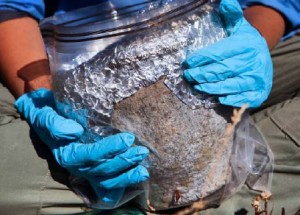
Rebecca Sgouros surveys an alpine lake in the northern Tetons
Surveying the High Country
By Matt Stirn & Rebecca Sgouros
Frison Institute Bulletin, Fall 2015
This summer, with generous support from Ed and Shirley Cheramy through the Frison Institute’s Alpine Archaeology Fund and from the Caribou-Targhee National Forest, the Teton Archaeological Project (TAP) continued its second season of high-elevation archaeology in the Teton Range. The project is directed by Matthew Stirn and Rebecca Sgouros of the Jackson Hole Historical Society and Museum and has succeeded with the help of student volunteers from U.W., the University of Montana, Montana State, Kennesaw State, the University of Nevada – Reno, and the University of California – Berkeley.
The focuses of the TAP are surveying and recording new terrestrial and ice patch archaeological sites, investigating the economics of prehistoric alpine groups, and comparing past human adaptations in the Teton Range to other montane regions.
We have recorded over 30 sites ranging in age from the Cody Complex (ca. 9,500 BP) to Late Prehistoric (ca. 300 BP). We have recorded two ice patch finds including a 3,000 year old
Whitebark Pine artifact and a 6,000 year old piece of Douglas Fir. Other highlights include the first high elevation ceramic site in the Tetons, ten soapstone bowls and fragments, and the completion of a lipid residue study which identified prehistoric cuisine including trout (the first evidence of high elevation fishing), marmot, elk, bison, biscuitroot, and whitebark pine. At the end of this past season we extracted a sediment core from an alpine lake in the northern Tetons, which with the help of Dr. Peter Wigand (University of Nevada Reno), will be analyzed for pollen, diatoms, fire history, and isotopes. While radiocarbon dates are pending, volcanic ash in the core suggests we will have at least 8,000 years of environmental history preserved in the core.
Overall, the Tetons have offered a fascinating and exciting place to work. Be it trekking into remote basins with a string of horses, black bears wandering through camp, or a whiteout blizzard in the middle of August, we never know what adventure will come next. Archaeologically, less than 20% of the entire range has been investigated and we look forward to returning over the years to come.
- A 9,500 year old Alberta style projectile point that was discovered far above treeline in the central Tetons.
- The Teton Archaeological Project team recording a late prehistoric site in the northern Tetons.
- Matt Stirn and Megan Jones record a prehistoric site in the northern Tetons.
- Paddling the coring rig to the center of the lake in preparation for extracting the pollen core.
- Matt Stirn on the horizon checking out unexplored country.
- Rebecca Sgouros packages a large soapstone bowl preform found at 10,000 feet on an exposed alpine ridge.
To read the entire article from the newest Frison Institute Bulletin click here



